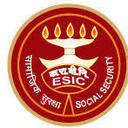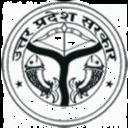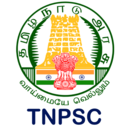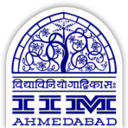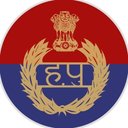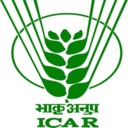Study Notes: Preparing for competitive government exams like SSC, Banking, Railways, SEBI, RBI, NABARD, and more can be challenging without the right guidance. To tackle this, Oliveboard is offering both exam wise notes and subject wise notes for popular government exams like SSC CGL, CHSL, IBPS PO, SBI Clerk, RRB NTPC, SEBI, RBI, NABARD, and more.
Study Notes 2025
From Quantitative Aptitude to General Awareness, our study notes cover every subject with clarity and exam relevance. All materials are available as easy to download PDF study notes 2025, allowing you to prepare anytime, anywhere. Whether you need SSC notes, Bank exam notes, free study notes or reliable online preparation material, Oliveboard has everything you need. This page has been created to provide all the study notes at one place to ease your preparation.
Check Government Exam Courses
Exam Wise Study Notes
Access comprehensive and up-to-date exam wise study notes designed to match the latest patterns and syllabi of major government exams. Whether you are preparing for SSC, Banking, Railways, RBI, NABARD or even UGC NET, Oliveboard provides high-quality, topic wise study material to help you excel.
UGC NET Study Notes
The NTA has released UGC NET notification. Ace your upcoming UGC NET 2025 exam with Oliveboard's expert designed UGC NET study notes, PDF downloads, and mock tests. These subject-wise notes are updated as per the latest syllabus and curated by top educators to enhance your exam readiness. Whether you're preparing for Commerce, History, Education, or Political Science, Oliveboard's exam-wise study material and UGC NET previous year papers provide everything you need in one place.
Download Previous Year Papers of All Government Exam
Banking Study Material
Banking aspirants preparing for exams like SBI PO, SBI Clerk, IBPS PO, IBPS Clerk, and IBPS RRB can now access expert-curated Bank exam study notes, PDF downloads, and previous year papers (PYPs) in one place. These free study notes are aligned with the latest syllabus and help streamline your preparation with exam-wise study material.
| Exam Name | Study Notes |
|---|
| SBI Clerk Exam | Study Notes |
| SBI PO Exam | Study Notes |
| IBPS RRB PO Exam | Study Notes |
| IBPS RRB Clerk Exam | Study Notes |
| IBPS Clerk Exam | Study Notes |
| IBPS PO Exam | Study Notes |
| IBPS SO Exam | Study Notes |
| ECGC PO Exam | Study Notes |
| RBI Assistant Exam | Study Notes |
| IDBI Junior Assistant Manager Exam | Study Notes |
SSC Study Material
If preparing for SSC exams like CGL, CHSL, or MTS, Oliveboard offers complete and updated SSC study material to help you prepare smartly and effectively. Our expert created SSC study notes are designed as per the latest exam pattern and syllabus, covering every section in detail.
What's Included in Our SSC Study Notes?
All SSC Study Notes topics come with explanations, examples, and practice questions, making your prep efficient and exam-focused. Each subject-wise note is also available as a PDF download, so you can revise anytime, even offline.
| Exam | Study Notes |
|---|
| SSC CGL | Study Notes |
| SSC CHSL | Study Notes |
| SSC MTS | Study Notes |
| SSC GD Constable | Study Notes |
| SSC JE | Study Notes |
| SSC Stenographer | Study Notes |
| SSC CPO | Study Notes |
| SSC JHT | Study Notes |
Railway Exams Study Material
Railway Recruitment Board (RRB) conducts popular exams like RRB NTPC and RRB Group D to fill central government jobs in the railway sector. These exams are ideal for 10th to graduate-level candidates and offer stable careers in Indian Railways.
| Exam Name | Study Notes |
|---|
| RRB ALP Exam | Study Notes |
| RRB Technician Exam | Study Notes |
| RRB NTPC Exam | Study Notes |
| RRB JE Exam | Study Notes |
| RRB Paramedical Recruitment Exam | Study Notes |
| RRB Ministerial & Isolated Categories Exam | Study Notes |
| RPF ALP CBT 2 Exam | Study Notes |
| RPF Constable Exam | Study Notes |
| RRB SI PST/PET Exam | Study Notes |
| Railway Teacher Recruitment | Study Notes |
| RRB Group D | Study Notes |
Regulatory Bodies Study Material
Aspiring candidates preparing for top regulatory exams like RBI Grade B, NABARD Grade A, SEBI Grade A, and others can now boost their prep with expertly curated regulatory body study notes and PDF study material. These resources cover updated syllabus topics, offer previous year papers (PYPs), and ensure structured preparation. Get access to high-quality, exam-wise notes and free downloads tailored for RBI, SEBI, SIDBI, IFSCA, and IRDAI exams all in one place.
Free eBooks for Government Exam Preparation
To further support your preparation journey, Oliveboard also offers free downloadable eBooks covering important topics and practice questions for major government exams like SSC, Banking, Railways, RBI, and NABARD. These eBooks are designed to help you revise key concepts, master tricky topics, and practice exam-level questions with ease. Download the eBooks below and take your preparation to the next level.
Subject Wise Study Notes
Access well-structured, subject-wise study notes for SSC, Bank, Railway, UGC NET, and Regulatory exams, designed by exam experts at Oliveboard. These notes are based on the latest syllabus and exam pattern for 2025, making them ideal for concept-building, revision, and daily practice. Available in downloadable PDF format, these notes save time and boost retention for every major subject.
Quantitative Aptitude Study Notes
Quantitative Aptitude is one of the most scoring yet challenging sections in competitive exams like SSC CGL, SSC CHSL, IBPS PO, SBI Clerk, RRB NTPC, and UGC NET Paper 1. A strong grasp of topics like Arithmetic, Data Interpretation, Algebra, and Number Series is essential to clear both Prelims and Mains stages. Oliveboard's Quantitative Aptitude study notes are designed by experts to help you master concepts, apply shortcuts, and solve questions accurately within time. These free study notes are aligned with the latest exam syllabus, available as PDF downloads, and ideal for revision and daily practice. Whether you're preparing for SSC, Bank, Railway, or Regulatory exams, these notes form the foundation of your quantitative preparation strategy.
Download Quantitative Aptitude Notes PDF
Reasoning Ability Study Notes
Reasoning Ability is a crucial section in exams like SSC CGL, CHSL, IBPS PO, SBI Clerk, RRB NTPC, and other competitive exams, testing your logical thinking and problem-solving speed. Oliveboard's free study notes for Reasoning Ability cover essential topics such as Puzzles, Seating Arrangement, Syllogism, Blood Relations, and Coding-Decoding, as per the latest syllabus. These expert-designed notes are easy to understand and available as PDF downloads, helping you build accuracy and speed through structured concepts and examples. Perfect for daily practice and quick revision, these free reasoning notes are ideal for both prelims and mains stages across SSC, Banking, Railway, and UGC NET exams.
Download Reasoning Notes PDF
English Language Study Notes
The English Language section is a key part of most competitive exams, including SSC CGL, CHSL, IBPS PO, SBI Clerk, RRB NTPC, and more. From reading comprehension and grammar to error spotting and vocabulary, mastering English is essential to boost your score and qualify sectional cut-offs. Oliveboard offers free English Language study notes designed to strengthen both your conceptual understanding and exam strategy. These notes are updated as per the latest exam patterns and are available in easy-to-download PDF format, making them perfect for regular practice and quick revisions. Whether you're targeting SSC, Banking, Railways, or Regulatory exams, these subject-wise notes help you prepare smarter, faster, and better.
Download English Language Notes PDF
General Awareness Study Notes
General Awareness is one of the most scoring sections in SSC, Banking, Railways, UGC NET, and Regulatory Body exams like RBI, SEBI, and NABARD. It includes Static GK, Current Affairs, Banking Awareness, and Financial Awareness, all of which demand regular updates and smart revision. Oliveboard's free General Awareness study notes are curated by experts to match the latest syllabus and exam trends. These notes, available in PDF format, help aspirants stay informed, save time, and revise effectively. Whether you're preparing for SSC exams, Bank prelims/mains, or UGC NET Paper 1, these subject-wise notes are a must-have for mastering GA with clarity and confidence.
Download General Awareness Notes PDF
Why Use Oliveboard Study Notes for Exam Preparation?
Oliveboard offers expertly crafted free study notes and exam-wise preparation material for top government and regulatory exams like SSC, Banking, Railways, UGC NET, RBI, NABARD, and more. These subject-wise notes are structured as per the latest syllabus and updated exam trends to ensure high scoring potential. Oliveboard's study notes has the following features:
- Free Study Notes: Access high-quality, expert-curated notes for major government exams at zero cost.
- Exam Wise Notes: Get tailored study material for SSC, Bank, Railways, UGC NET, RBI, NABARD, SEBI & more.
- Subject Wise Coverage: Comprehensive notes for Quantitative Aptitude, Reasoning, English, General Awareness, and others.
- Easy PDF Downloads: Download PDF notes for offline revision and quick last-minute preparation.
- Mocks & PYPs: Boost your practice with updated mock tests and real previous year papers (PYPs).
- Latest Syllabus Updates: Study material aligned with the latest 2025 syllabus and official notifications.
- Ideal for Online Preparation: Structured, easy-to-use, and reliable content trusted by lakhs of aspirants.
Attempt Oliveboard Test Series
How to Use Study Notes Effectively?
Boost your scores with these smart preparation tips and best practices on how to use study notes for maximum benefit:
- Create a Daily/Weekly Study Plan: Allocate time slots for each subject using Oliveboard's exam-wise study notes and plan your prep week by week.
- Combine Notes with Mocks & PYQs: Use the notes alongside mock tests and previous year question papers to strengthen application and retention.
- Make Short Revision Notes: Summarize key points into your own revision notes for quick recall before the exam.
- Track Progress with PDF Downloads: Use downloaded PDF study notes to monitor completed topics and stay consistent.
Check Upcoming Government Exams













